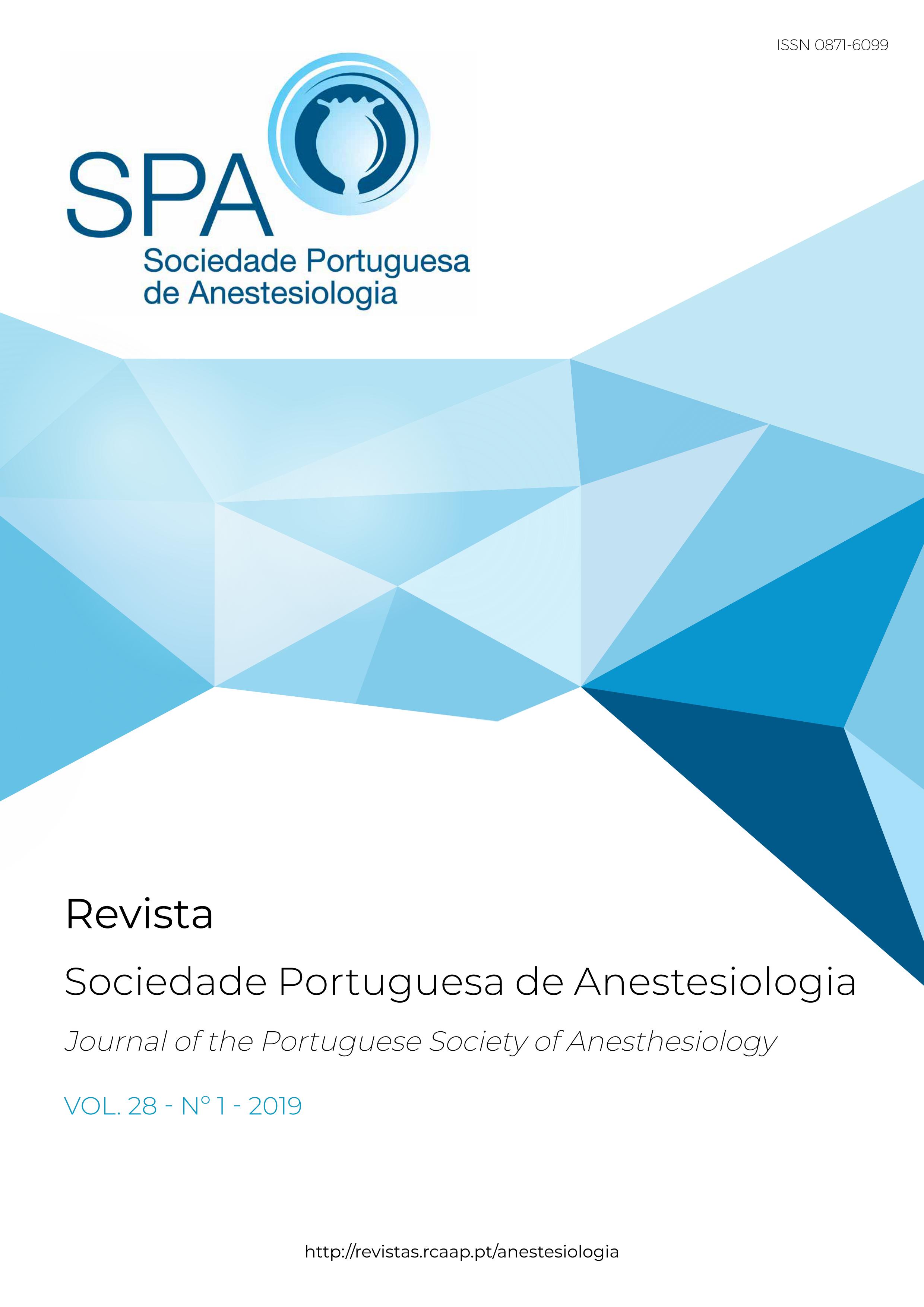Teaching Anaesthesia Residents Advanced Airway Skills:
A Proposal for Teaching Orotracheal Intubation Using a Fiberoptic Bronchoscope
DOI:
https://doi.org/10.25751/rspa.15811Keywords:
Anestesiologia/ensino; Broncoscopia; Broncoscópios; Ensino/métodos; Intubação Intratraqueal/métodos; Tecnologia de Fibra ÓpticaAbstract
The correct teaching of technical skills is fundamental to ensure patient safety. According to the Practice Guidelines for Management of Difficult Airway from the ASA, an awake intubation with a flexible bronchoscope should be attempted first, whenever a difficult airway is anticipated. Therefore, trainees should be autonomous in the successful use of a fiberoptic bronchoscope when faced with difficult
airway management. This paper describes an educational proposal for teaching fibreoptic intubation to trainees. Such a strategy can be used in hospitals that do resident training. A few conceptual frameworks behind this strategy will be discussed first, followed by an instructional checklist to guide the trainee in the procedure, without risking patient safety.
Downloads
References
2. Apfelbaum JL, Hagberg CA, Caplan RA, Blitt CD, Connis RT, Nickinovich DG, et al. Practice guidelines for management of the difficult airway: an updated report by the American Society of Anesthesiologists Task Force on Management of the Difficult Airway. Anesthesiology. 2013;118:251-70. doi: 10.1097/ALN.0b013e31827773b2.
3. Bandura A. Social Learning Theory. New Jersey: Prentice-Hall; 1977.
4. Shute J. Mastery learning and modules. NLN Publ. 1976:32-8.
5. Siddaiah-Subramanya M, Smith S, Lonie J. Mastery learning: how is it helpful? An analytical review. Adv Med Educ Pract. 2017;8:269-75. doi: 10.2147/AMEP. S131638.
6. McGaghie WC, Issenberg SB, Cohen ER, Barsuk JH, Wayne DB. Medical education featuring mastery learning with deliberate practice can lead to better health for individuals and populations. Acad Med. 2011;86:e8-9. doi: 10.1097/ACM.0b013e3182308d37.
7. Guadagnoli M, Morin MP, Dubrowski A. The application of the challenge point framework in medical education. Med Educ. 2012;46:447-53. doi: 10.1111/j.1365-2923.2011.04210.x.
8. Jarus T, Goverover Y. Contextual interference and the aquisition, retention and transfer of a motor skill. Percept Mot Skills. 1999;88:437-47.
9. Battig W. Facilitation and Interference. Bilodeau EA, editor. Aquisition of Skill. New York: Academic Press; 1966. p. 215-44.
10. Cepeda NJ, Pashler H, Vul E, Wixted JT, Rohrer D. Distributed practice in verbal recall tasks: A review and quantitative synthesis. Psychol Bull. 2006;132:354-80.
11. Donovan JJ, Radosevich DJ. A meta-analytic review of the distribution of practice effect: now you see it, now you don’t. J Appl Psychol. 1999;84:795-805.
12. Moulton CA, Dubrowski A, Macrae H, Graham B, Grober E, Reznick R. Teaching surgical skills: what kind of practice makes perfect?: a randomized, controlled trial. Ann Surg 2006;244:400-9. doi: 10.1097/01.sla.0000234808.85789.6a.
13. Motola I, Devine LA, Chung HS, Sullivan JE, Issenberg SB. Simulation in healthcare education: a best evidence practical guide. AMEE Guide No. 82. Med Teach. 2013;35:e1511-30.
14. Dent J, Harden RM. A practical guide for medical teachers. 4th ed. Dundee: Churchill Livingstone; 2013.
15. Young JQ, Van Merrienboer J, Durning S, Ten Cate O. Cognitive Load Theory: implications for medical education: AMEE Guide No. 86. Med Teach. 2014;36:371-84.
16. Reedy GB. Using cognitive load theory to inform simulation design and practice. Clin. SimulNurs. 2015;11:355-60.
17. Ospina O, Medina A, Marulanda M, Buitragoe L. Cumulative Sum learning curves (CUSUM) in basic anaesthesia procedures. Colombian J Anesthesiol. 2014;42:142-53.
18. The “Open it up, line it up” approach for Fiberoptic Intubation. [Accessed 11.10.2017] Available at: http://faculty.washington.edu/pcolley/.)
19. Aggarwal R, Darzi A. Training in the operating theatre: is it safe? Thorax. 2006;61:278-9.
20. Hatala R, Cook DA, Zendejas B, Hamstra SJ, Brydges R. Feedback for simulationbased procedural skills training: a meta-analysis and critical narrative synthesis. Adv Health Sci Educ Theory Pract. 2014;19:251-72. doi: 10.1007/s10459-013-9462-8.
Downloads
Published
How to Cite
Issue
Section
License
Articles are freely available to be read, downloaded and shared from the time of publication.
The RSPA reserves the right to commercialize the article as an integral part of the journal (in the preparation of reprints, for example). The author should accompany the submission letter with a declaration of copyright transfer for commercial purposes.
Articles are published under the terms of the Creative Commons Attribution Non-Commercial License (CC BY-NC).
After publication in RSPA, authors are allowed to make their articles available in repositories of their home institutions, as long as they always mention where they were published.


